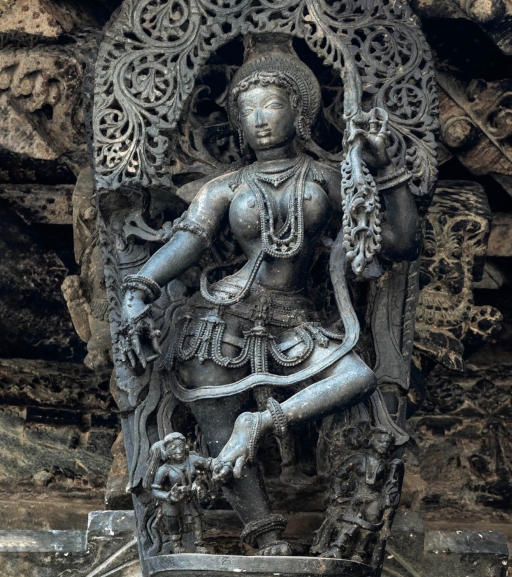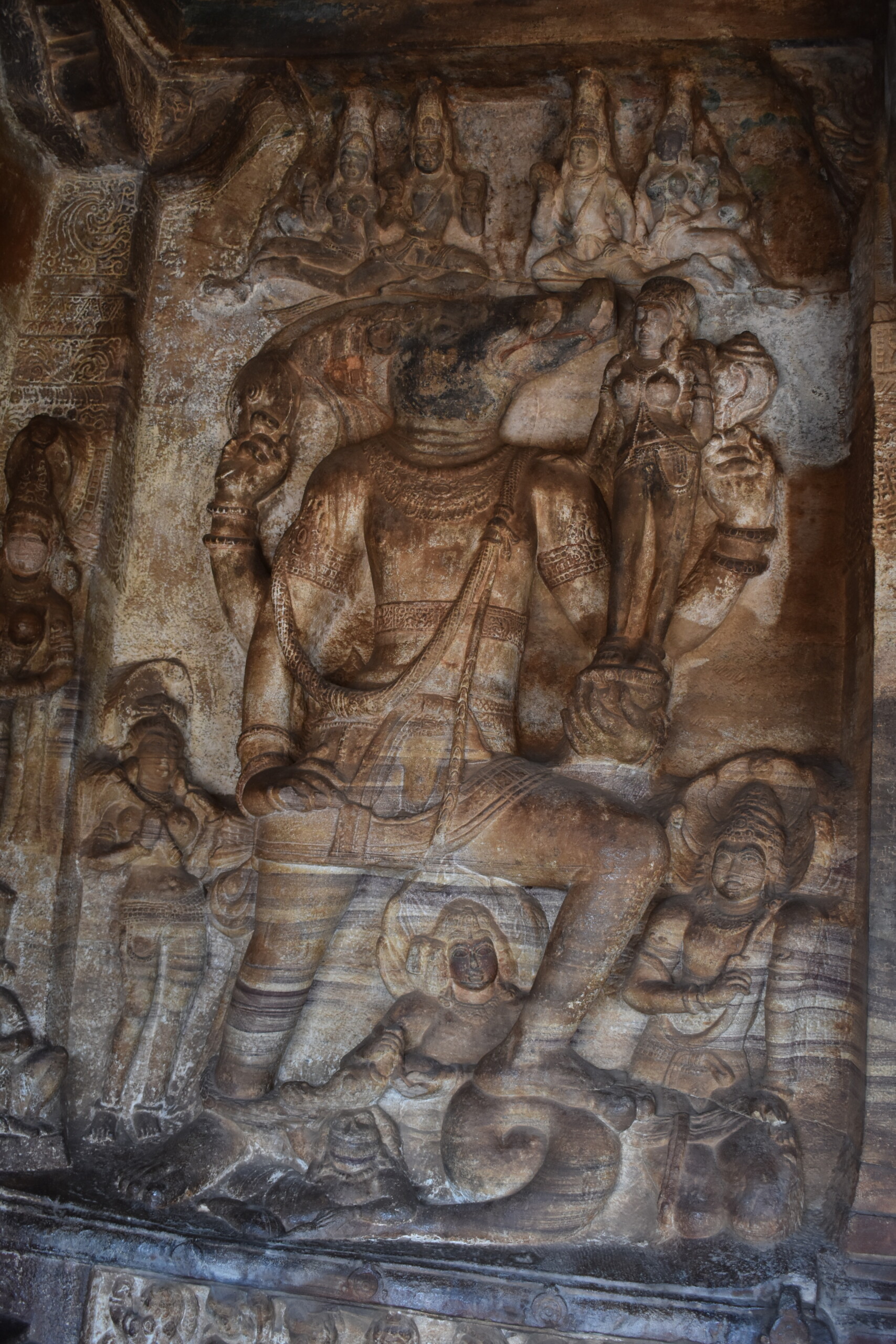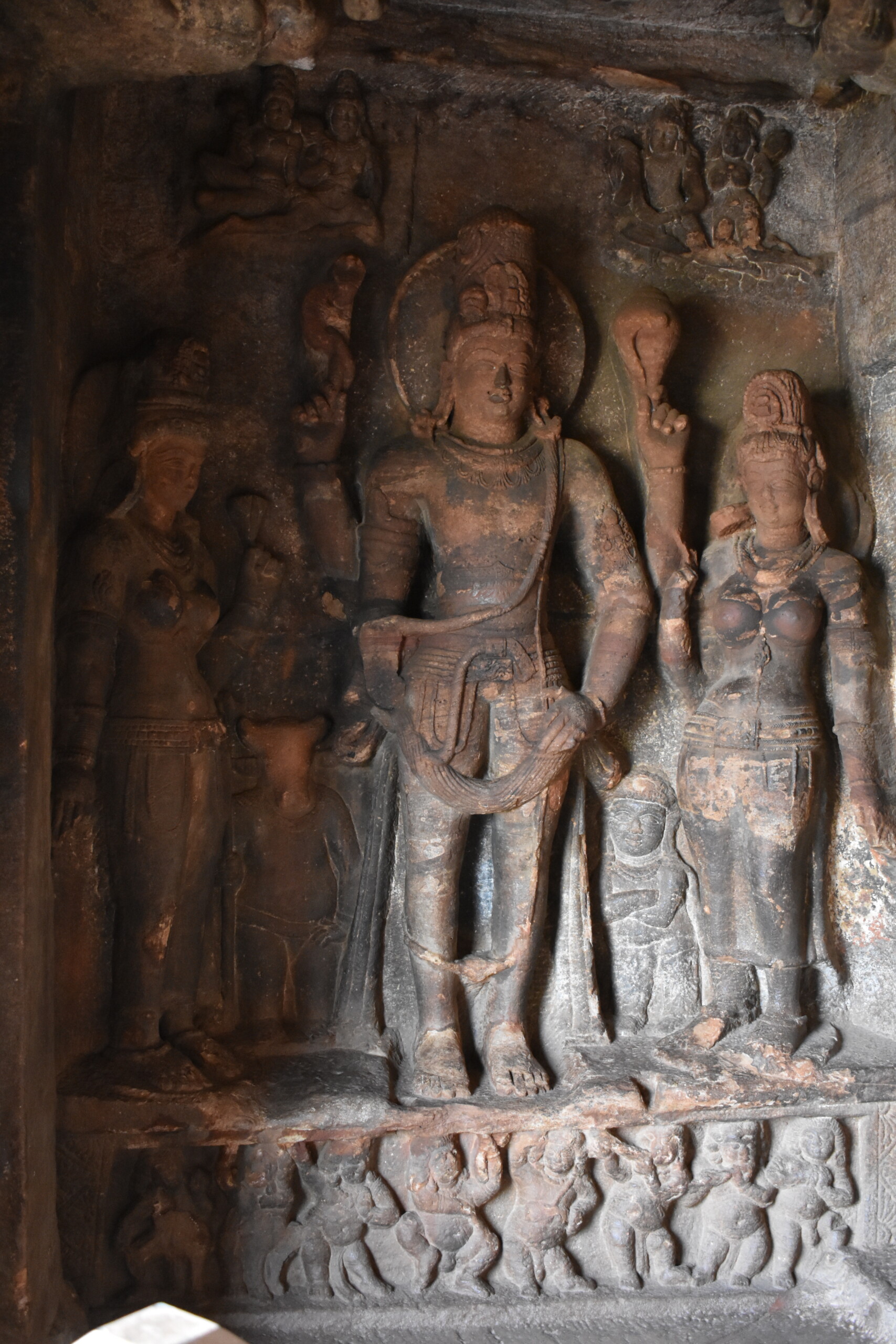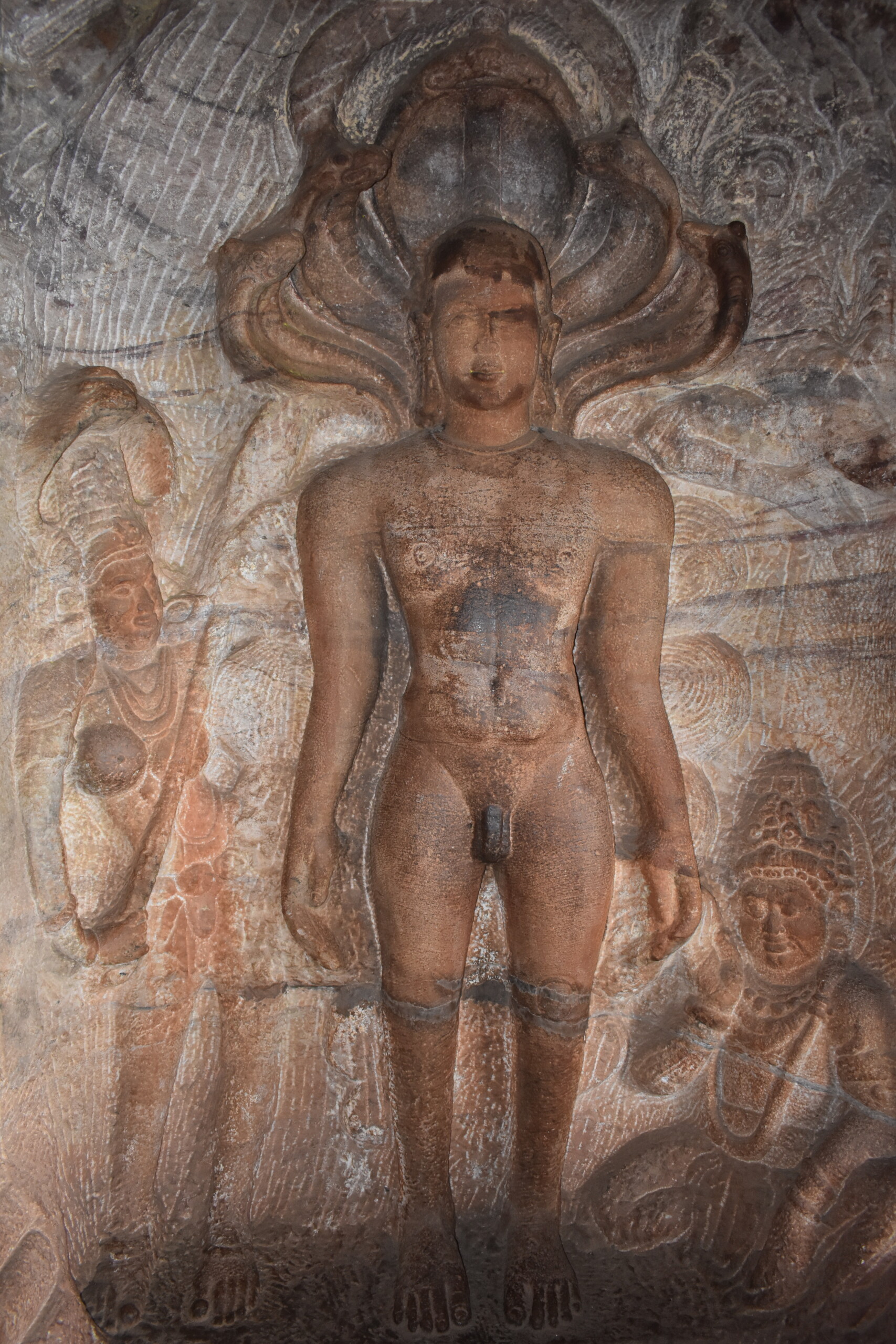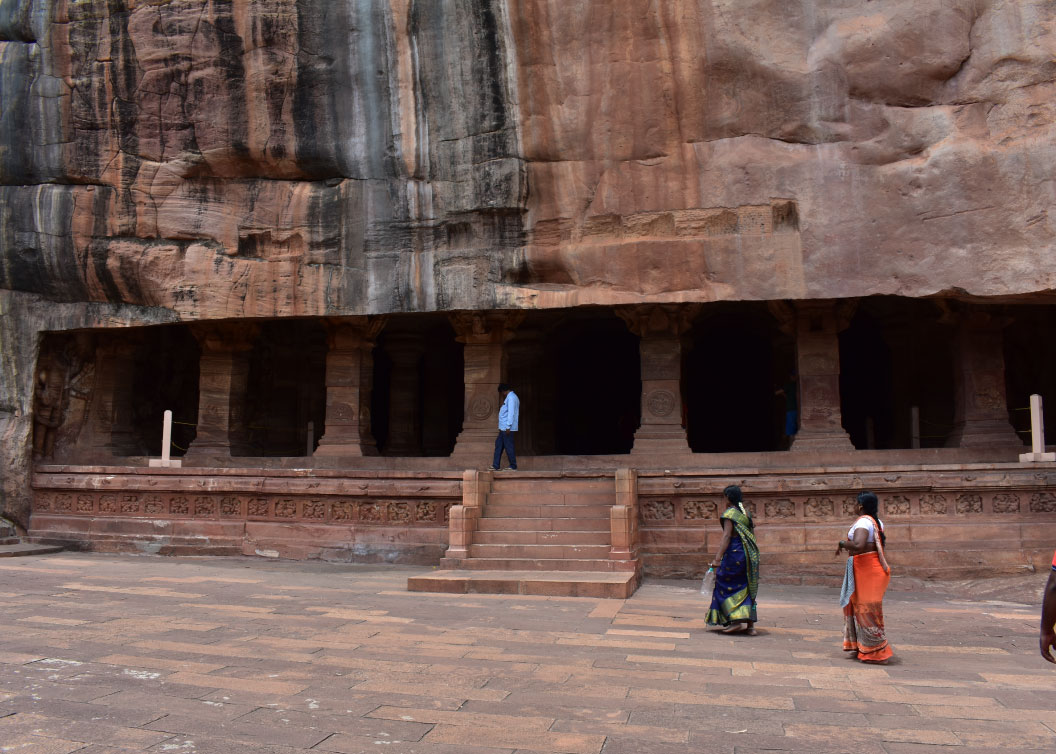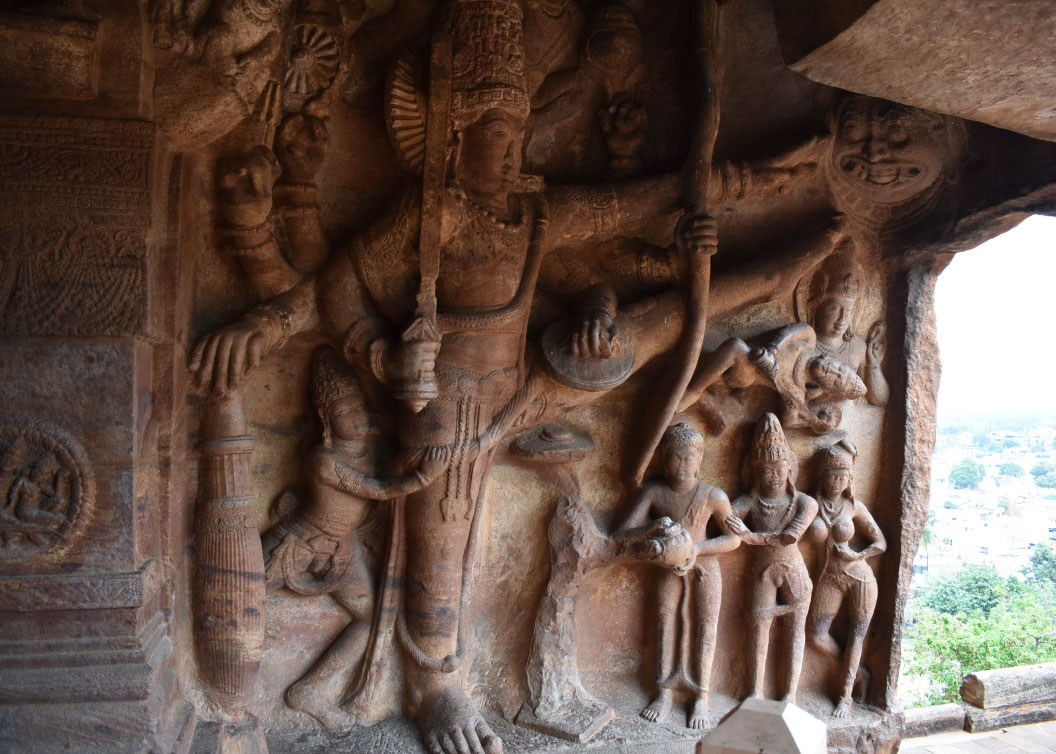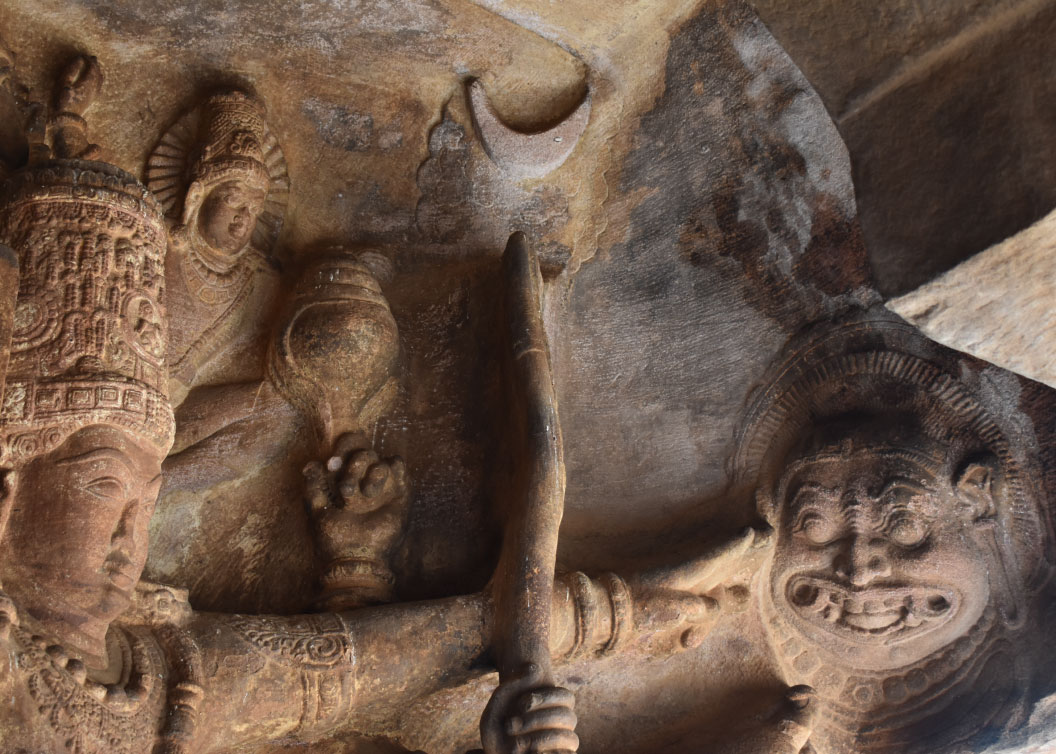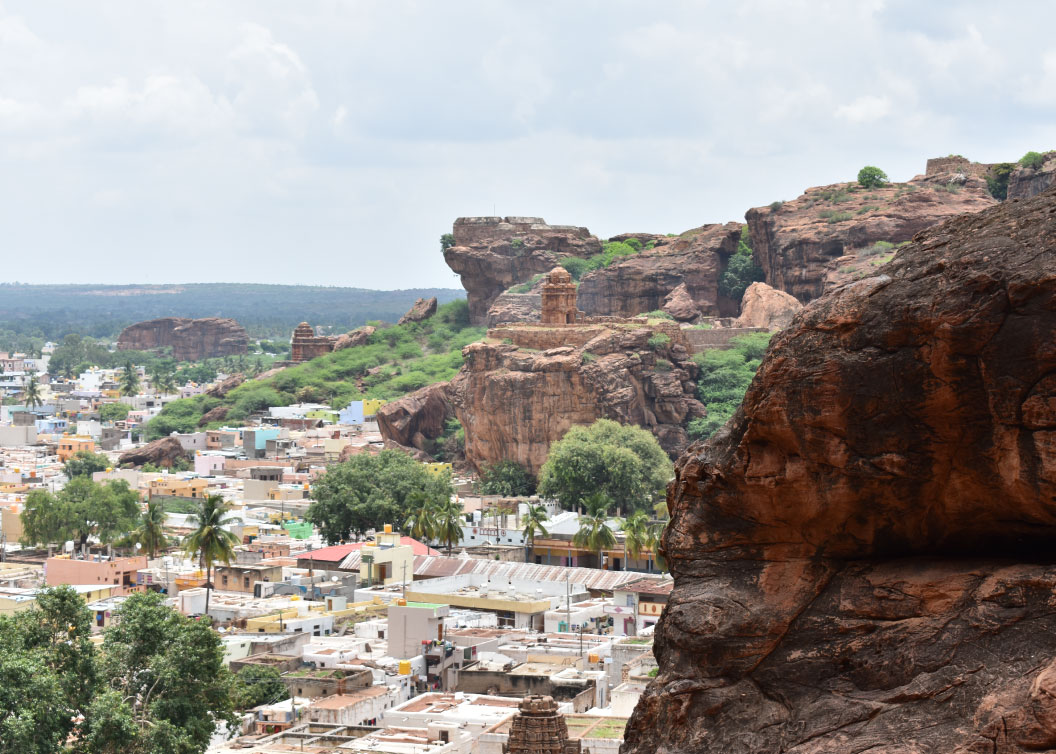Badami: The Confluence of Deccan Diversity
John Weaver
Located in Northern Karnataka, the town of Badāmī is home to a plethora of monuments which together span 1,100 years of history, countless architectural stylistic idioms, and an equally impressive number of dynasties.
Formerly known as Vātāpi, this site first gained prominence when it was established as the royal capital of the Early Chalukyas in the 6th Century CE. Likely selected for its strategic importance, the town is hemmed in on three sides by harsh cliffs which restrict entry to the locale. Today, a massive man-made lake, or kolla, forms the focal point of the site (Image 1), around which abound caves, temples, forts, and even a domed tomb of the Adil Shahi Sultans.
Construction began in the second half of the 6th Century with the four cave temples that adorn the Southern cliff face (Image 2). Each of the sites was carved from the hills, with monolithic carvings and pillars highlighting the natural beauty of the red stone, exemplified by the boar avatar of Vishnu in Cave 3 (Image 3).
The first cave is dedicated to Shiva and features stunning images of his likeness. Resplendent carvings of Ardhanarishvara (Image 4), the synthesis of Shiva and his wife Parvati, and Harihara (Image 5), the combined form of Shiva and Vishnu, straddle the boundary of the temple, highlighting its sculptural splendor.
Cave 4, likely the latest of the group, reveals a Jain presence in Badami, with images of Tirthankaras, venerable teachers of Dharma in the Jain tradition, like Parshvanatha (Image 6), who stands under a multi-hooded cobra.
Cave 3 (Image 7), the largest and most refined, is dedicated to Vishnu, boasting an abundance of monumental images of the deity. Trivikrama, the dwarf avatar which rescued the three worlds from a demon, extends his foot outward as he prepares to leap across the universe (Image 8). Rahu, a demon intent on consuming the sun, chases after the foot of the deity, mistaking its grandeur for the solar chariot (Image 9). The carving overlooks the whole site, marking its divinity (Image 10).

